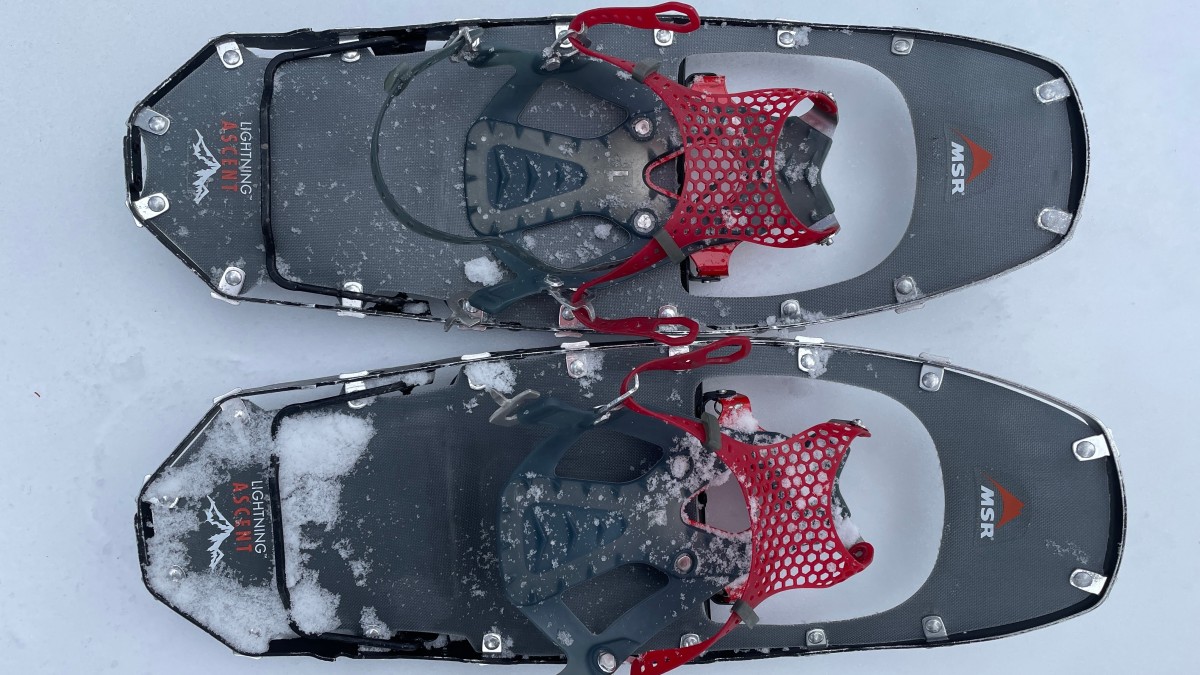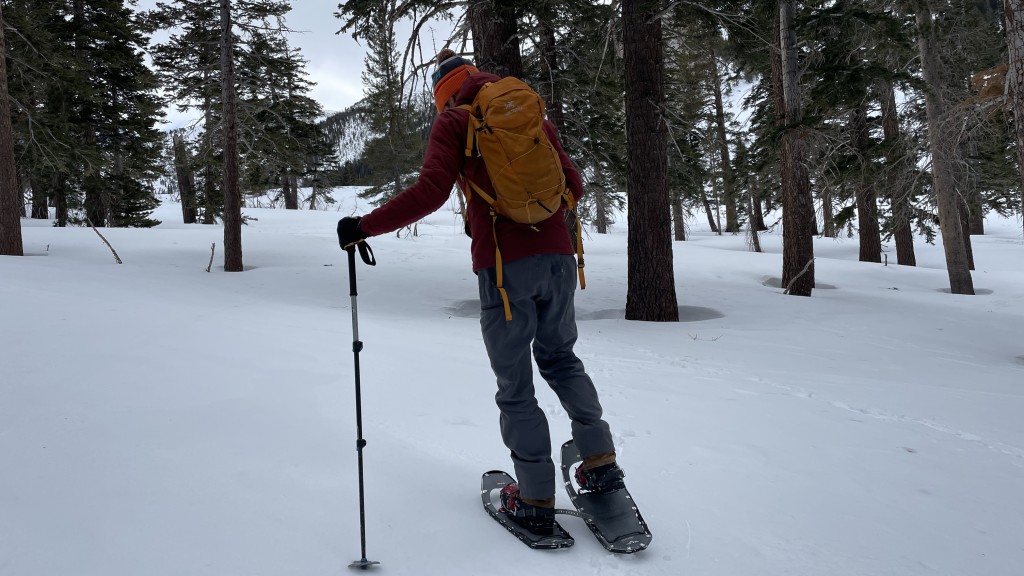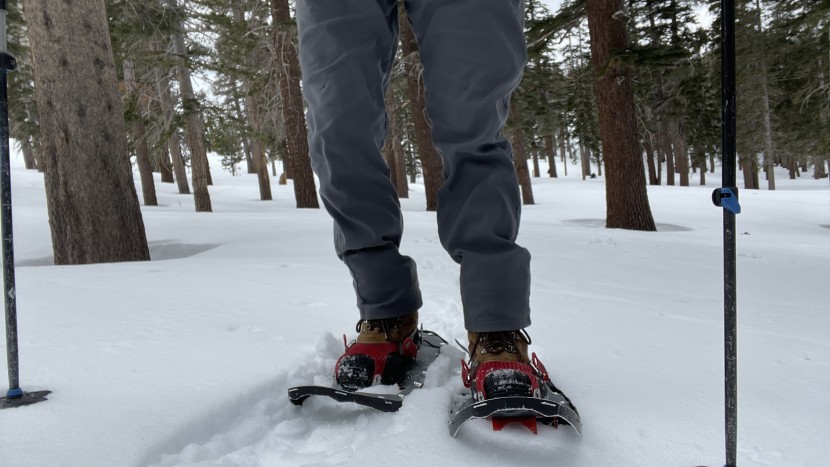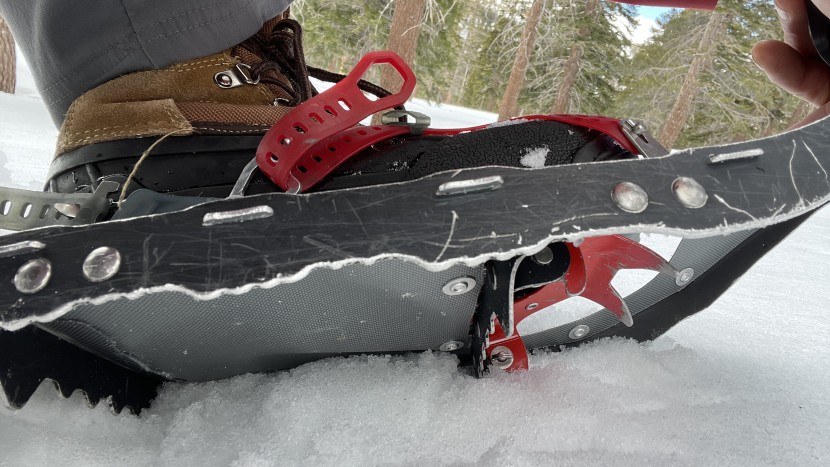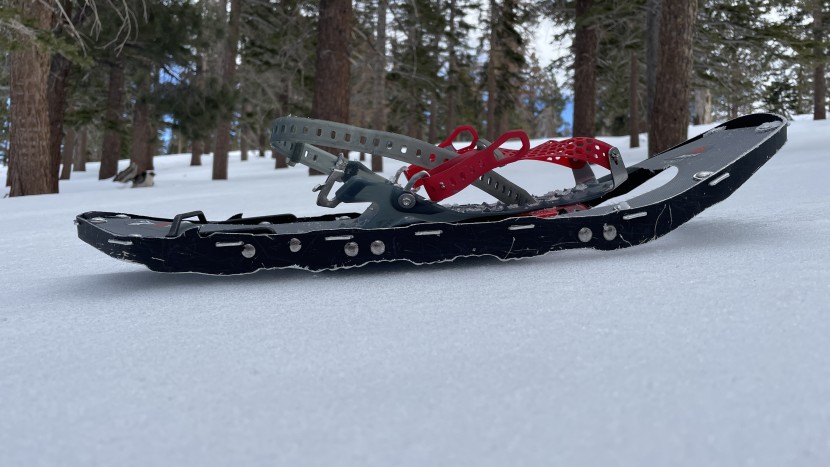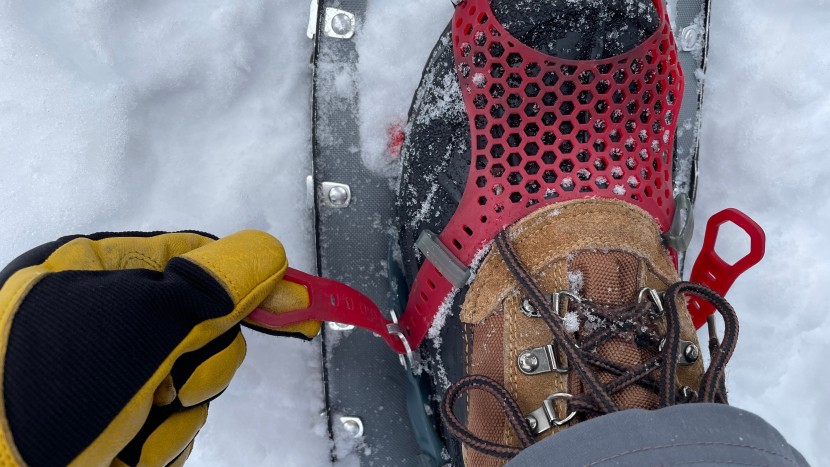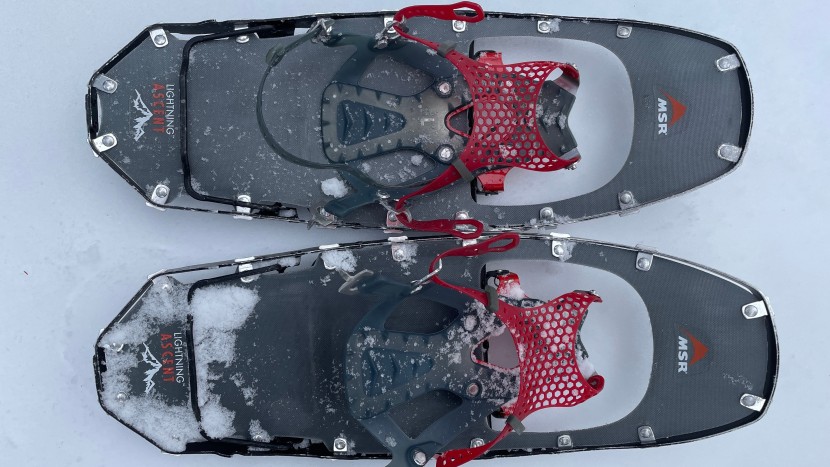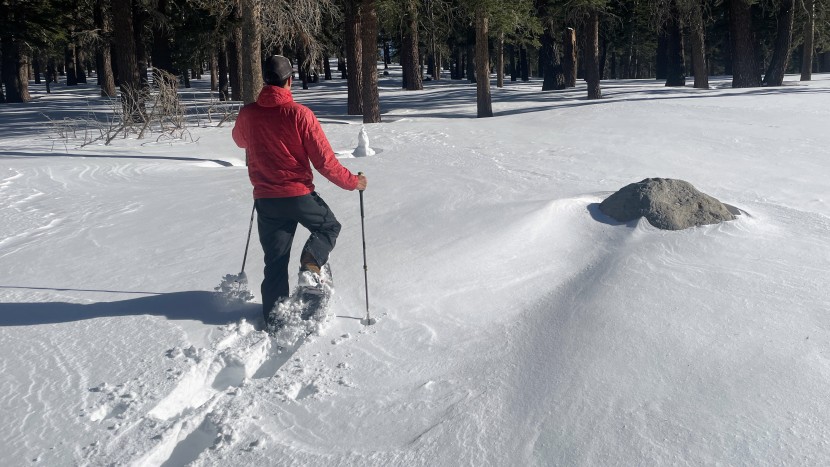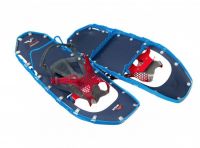
Our Verdict
Our Analysis and Test Results
The excellent features of this snowshoe have remained virtually unchanged for years, other than the binding system in more recent years. The latest version of the bindings adds more comfort, though at the cost of being slightly less easy to use than the old rubber strap design.
Flotation
Flotation is the main reason to reach for a pair of snowshoes; the best models keep you on top of or just below the snow's surface. There is a clear correlation between surface area and flotation. The Lightning Ascent is average among the models in our test regarding surface area specs, but the lightweight aluminum frame and urethane-impregnated nylon deck boost the flotation. A couple of other models float better because they provide more surface area when wearing the manufacturer's recommended size for our tester's weight.
Stride ergonomics and flotation are two metrics that exist in tension, as a larger snowshoe floats better but doesn't usually walk as naturally. In the case of the Ascent, our testers felt that these two characteristics were in excellent balance. We suspect this is due both to the hinged binding design and the slightly rockered shape of the frame.
Winter travelers who need to augment their flotation in fresh snow or deep powder should look into the Lightning Tails. This MSR accessory adds 5 inches of length to the snowshoe. Our testers thought, “these are sweet on mellow terrain but rather cumbersome on steep or technical ground”.
Traction
The Lightning Ascent features the most extensive traction design in our review. Under the forefoot are two large sharp points reminiscent of the front spikes of a crampon. Just behind this is a row of points featuring two large spikes and a selection of smaller ones. A similar row exists under the part of the deck where the user's heel sits. Additionally, the lateral frame includes serration along about half of their length.
The vertical orientation of the aluminum frame pieces means that any part of the frame touching the snow provides traction in at least one direction. This design stands in contrast to those with a tubular structure, the round shape of which only reduces grip. Furthermore, this means that the Lightning Ascent has lateral traction, which is unmatched by any other product in our review. One of our testing team noted, “if I'm slipping around while hiking in these it's not the snowshoes' fault”.
Walkability
A number of the snowshoes in our review are great to walk in. In this metric, we are examining the size and shape of the deck as well as the binding to the deck attachment. Smaller and more shapely decks are generally easier to walk in, though there's a sacrifice in flotation. Our testing team prefers a hinged attachment of the binding to the deck, which the Lightning Ascent has. Though this sacrifices some walking comfort on firm trails, we're happy to trade that comfort for precision in steep, firm, or otherwise rowdy terrain.
The gentle taper in the deck from mid-foot to tail enhances the ergonomics slightly without giving up much flotation. Our testers also suspect that the rockered deck shape helps. The relative light weight of the Ascent (4 pounds even for a pair in the 25" size) makes them far less cumbersome with each step than heavier models.
Bindings
When it comes to ease of use, our testers look for snowshoes that are easy to put on, adjust on the fly, and take off when they're done hiking. The heel strap of the Lightning Ascent will be familiar to many users; it's a simple rubber strap with a belt-style buckle that won't freeze up and is very durable.
Our testers had problems with the straps that secure the redesigned part of the binding. The rubber webbing that cages the forefoot is secured by two rubber straps that pass through buckles near the foot's arch. We found that though these straps are long enough to fasten, the tails aren't long enough to grab easily, especially with a larger foot in the binding using more of the strap. This effect was exacerbated when we wore gloves, which folks often wear while snowshoeing. A small hole at the end of the strap helps a bit, but our lead tester still commented, “I wish these straps were just a couple of inches longer.”
MSR also changed the design of its strap keepers. They're just as easy to use but seem to be more durable. This update is a welcome improvement because the keepers are, in our experience, the most broken part of any MSR snowshoe. Finally, the heel lifters snap into place securely but are also simple enough to disengage.
MSR has long been a leader in binding security, and while the Paragon binding is a newer feature, we found it kept up the tradition. The rubber mesh/webbing securely cradles the forefoot with zero slippage, and the heel strap keeps the foot in place on steep uphills. All of the rubber strap-based bindings perform highly in this metric. None of them will come loose once properly fastened — except through user error.
A comfortable snowshoe binding distributes the tension of the binding as evenly as possible around the foot. Meaning that even if you're wearing thin or soft footwear, there are no hot spots, and circulation to the toes isn't restricted. The Paragon binding system on the Lightning Ascent nails it for comfort. Though the red rubber webbing looks like something Spider-Man might want on his snowshoes, it distributes binding tension evenly, regardless of footwear. We think the Ascent nails a balance of comfort, simplicity, and packability with the binding.
Should You Buy the MSR Lightning Ascent?
Though the Ascent is a pricey snowshoe, we think it's a reasonable value. That is, as long as you'll be using it in the situations it was designed and built for: rugged, mountainous terrain. This is the sort of terrain this snowshoe shines in and what justifies the higher price tag.
What Other Snowshoes Should You Consider?
The MSR Evo Trail could be a better choice for hikers who will only occasionally be flirting with rowdy alpine terrain. It offers slightly less flotation and traction but is still easy to use, has comfortable bindings, and can be pressed into service for brief above-treeline forays. Those who know they'll be on steeper ground should look at the Tubbs Flex VRT. It offers many of the same features as the Lightning Ascent with a smidge more flotation for larger hikers or larger packs.
| Awards | Best Overall Snowshoes |
|---|---|
| Price | $390 List Check Price at REI |
Overall Score  |
|
| Star Rating | |
| Bottom Line | The best snowshoes in our test, complete with high-end features and simple engineering |
| Pros | Rigid, precise, excellent binding security, impressive traction |
| Cons | New binding trades ease-of-use for comfort |
| Rating Categories | MSR Lightning Ascent |
| Flotation (30%) | |
| Traction (30%) | |
| Walkability (20%) | |
| Bindings (20%) | |
| Specifications | MSR Lightning Ascent |
| Measured Weight (per pair) | 4.0 lbs |
| Sizes Available | 22", 25", 30" |
| Binding System | Rubber net and straps with pin-in-hole |
| Frame Material | Aluminum |
| Measured Surface Area | 188 sq in |
| Measured Dimensions | 25"L x 8"W |
| Binding/Deck Connection | Hinged |
| Crampon/Traction Aids | Steel crampons, rails, and teeth |
| Deck Material | TPU coated Nylon |
| Heel Lift | Yes |
| Flotation Tails Sold Separately | Yes |
| Men's/Women's Versions Available | Yes |
| Optimum Weight Load (per manufacturer) | up to 180 lbs (size 22") 120-220 lbs (size 25") 150-280 lbs (size 30") |
| Tested Size | 25" |


